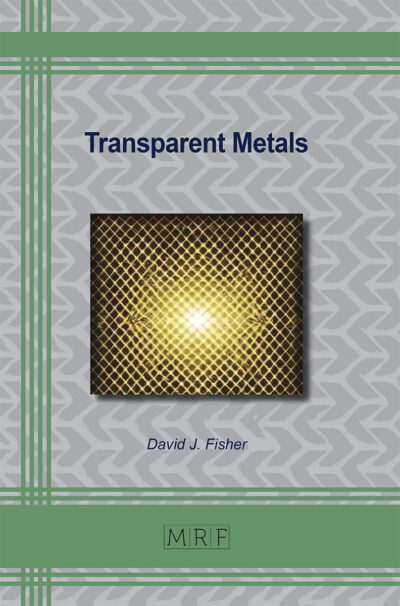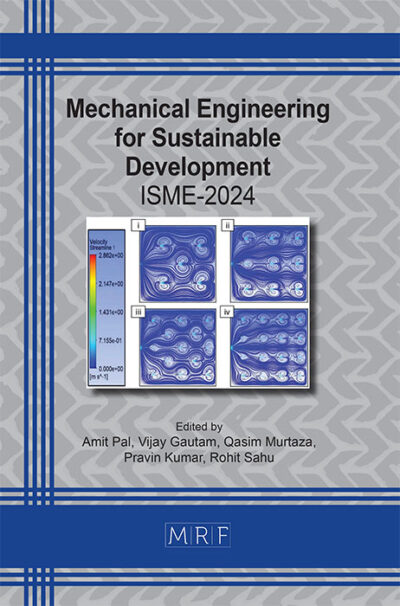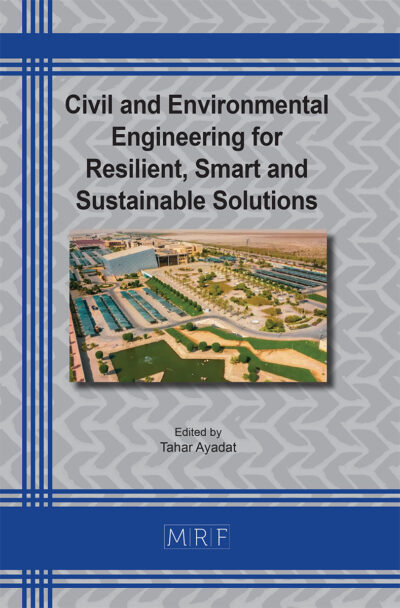Sustainability challenges and opportunities in UAE construction industry: An analytical survey
Yousef ALQARYOUTI, Mariam AL SUWAIDI, Raed Mohmood ALKHUWAILDI, Hind KOLTHOUM, Issa YOUSSEF, Mohammed AL IMAM
Abstract. The construction industry in the United Arab Emirates (UAE) is facing significant challenges in adopting sustainable practices. This study identifies and categorizes these challenges into four main categories: economic, capacity/professional, social, and technical challenges. 27 challenges were identified in these categories from literature and provided for a survey of the views of 62 industry professionals. The survey results highlight various barriers such as higher initial costs, longer project timelines, insufficient professional training, limited public awareness, and technological integration issues. Addressing these challenges will require a multi-faceted approach, including insurance interventions, increased information and education programs, public awareness campaigns, increased research and development, and improved collaboration and knowledge sharing among stakeholders. The paper concludes with recommendations for future work, emphasizing the need for coordinated efforts to promote sustainable construction in the UAE, thereby contributing to environmental conservation, economic stability, and improved quality of life.
Keywords
Sustainable Construction, Economic Challenges, Professional Challenges, Societal Challenges, Technological Challenges
Published online 2/25/2025, 11 pages
Copyright © 2025 by the author(s)
Published under license by Materials Research Forum LLC., Millersville PA, USA
Citation: Yousef ALQARYOUTI, Mariam AL SUWAIDI, Raed Mohmood ALKHUWAILDI, Hind KOLTHOUM, Issa YOUSSEF, Mohammed AL IMAM, Sustainability challenges and opportunities in UAE construction industry: An analytical survey, Materials Research Proceedings, Vol. 48, pp 1138-1148, 2025
DOI: https://doi.org/10.21741/9781644903414-122
The article was published as article 122 of the book Civil and Environmental Engineering for Resilient, Smart and Sustainable Solutions
![]() Content from this work may be used under the terms of the Creative Commons Attribution 3.0 license. Any further distribution of this work must maintain attribution to the author(s) and the title of the work, journal citation and DOI.
Content from this work may be used under the terms of the Creative Commons Attribution 3.0 license. Any further distribution of this work must maintain attribution to the author(s) and the title of the work, journal citation and DOI.
References
[1] S. J. Wilkinson, H. Remøy, C. Langston, Sustainable building adaptation: innovations in decision-making, John Wiley & Sons, 2014. https://doi.org/10.1002/9781118477151
[2] J. Zuo, X. H. Jin, L. Flynn, Social sustainability in construction-an explorative study, Int. J. Constr. Manag. 12 (2012) 51-63. https://doi.org/10.1080/15623599.2012.10773190
[3] J. Hao, Z. Chen, Z. Zhang, G. Loehlein, Quantifying construction waste reduction through the application of prefabrication: a case study in Anhui, China, Environ. Sci. Pollut. Res. 28 (2021) 24499-24510. https://doi.org/10.1007/s11356-020-09026-2
[4] Y. M. Al-Saleh, H. M. Taleb, The integration of sustainability within value management practices: A study of experienced value managers in the GCC countries, Proj. Manag. J. 41 (2010) 50-59. https://doi.org/10.1002/pmj.20147
[5] H. Omidvarborna, M. Baawain, A. Al-Mamun, Ambient air quality and exposure assessment study of the Gulf Cooperation Council countries: A critical review, Sci. Total Environ. 636 (2018) 437-448. https://doi.org/10.1016/j.scitotenv.2018.04.296
[6] M. Salama, A. R. Hana, Green buildings and sustainable construction in the United Arab Emirates, in: Proceedings of the 26th Annual ARCOM Conference, 2010, pp. 1397-1405.
[7] A. Al-Hajj, K. Hamani, Material waste in the UAE construction industry: Main causes and minimization practices, 2011. https://doi.org/10.1080/17452007.2011.594576
[8] S. Ahmed, S. El-Sayegh, The challenges of sustainable construction projects delivery-evidence from the UAE, Archit. Eng. Des. Manag. 18 (2022) 299-312. https://doi.org/10.1080/17452007.2022.2027224
[9] M. Iqbal, J. Ma, N. Ahmad, K. Hussain, M. S. Usmani, Promoting sustainable construction through energy-efficient technologies: an analysis of promotional strategies using interpretive structural modeling, Int. J. Environ. Sci. Technol. 2021, pp. 1-24. https://doi.org/10.1007/s13762-020-03082-4
[10] J. Locke, J. Dsilva, S. Zarmukhambetova, Decarbonization strategies in the UAE built environment: An evidence-based analysis using COP26 and COP27 recommendations, Sustainability 15 (2023) 11603. https://doi.org https://doi.org/10.3390/su151511603
[11] Ö. Çimen, Construction and built environment in circular economy: A comprehensive literature review, J. Clean. Prod. 305 (2021) 127180. https://doi.org https://doi.org/10.1016/j.jclepro.2021.127180
[12] T. Cernev, R. Fenner, The importance of achieving foundational Sustainable Development Goals in reducing global risk, Futures 115 (2020) 102492. https://doi.org/10.1016/j.futures.2019.102492
[13] A. Alqadami, N. Zawawi, Y. Rahmawati, W. Alaloul, A. Alshalif, Challenges of implementing Green Procurement in Public Construction Projects in Malaysia, IOP Conf. Ser.: Earth Environ. Sci. 849 (2020) 012047. https://doi.org/10.1088/1757-899X/849/1/012047
[14] M. I. Khan, Y. Bicer, M. Asif, T. A. Al-Ansari, M. Khan, T. A. Kurniawan, S. G. Al-Ghamdi, The GCC’s path to a sustainable future: Navigating the barriers to the adoption of energy efficiency measures in the built environment, Energy Convers. Manag.: X 2024, 100636. https://doi.org/10.1016/j.ecmx.2024.100636
[15] M. Aldhaheri, Developing smart prisons in the United Arab Emirates, Doctoral Dissertation, Queensland University of Technology, 2023.
[16] M. M. Quamar, S. Hameed, P. R. Kumaraswamy, United Arab Emirates, in: Persian Gulf 2023: India’s Relations with the Region, Springer Nature Singapore, Singapore, 2023, pp. 335-382. https://doi.org/10.1007/978-981-99-6380-5_9
[17] A. S. Zadeh, P. Dabnichki, L. Lunevich, Analysis of Business Practice and Opportunities in the Construction Industry of UAE in Comparison to Gulf States, in: KES-HCIS, 2022, pp. 71-87. https://doi.org/10.1007/978-981-19-3455-1_6
[18] F. M. Elessawy, The Abnormal Population Growth and Urban Sprawl of an Arabian Gulf City: The Case of Abu Dhabi City, Open J. Soc. Sci. 9 (2021) 245-269. https://doi.org https://doi.org/10.4236/jss.2021.92017
[19] Y. Alqaryouti, M. Al Suwaidi, R.M. AlKhuwaildi, H. Kolthoum, I. Youssef, M. Al Imam, A case study of the largest 3D printed villa: Breaking boundaries in sustainable construction, E3S Web Conf. 586 (2024) 01002. https://doi.org/10.1051/e3sconf/202458601002
[20] S. M. Saradara, M. M. A. Khalfan, A. Rauf, R. Qureshi, On the path towards sustainable construction-the case of the United Arab Emirates: a review, Sustainability 15 (2023) 14652. https://doi.org/10.3390/su151914652
[21] R. H. AL-Dabbagh, Toward Green Building and Eco-cities in the UAE, in: Renewable energy and sustainable buildings: Selected papers from the World Renewable Energy Congress WREC 2018, Springer International Publishing, 2020, pp. 221-233. https://doi.org/10.1007/978-3-030-18488-9_17
[22] Government of Dubai, Al Sa’fat – Dubai Green Building System, Accessed on October 19, 2023, from https://www.dm.gov.ae/municipality-business/al-safat-dubai-green-building-system/.
[23] Dubai Municipality, Al Sa’fat – Dubai Green Building System, Accessed on October 25, 2023, from https://www.dm.gov.ae/wp-content/uploads/2020/11/Safat-English.pdf.
[24] E. D. W. I. N. Rodriguez-Ubinas, S. A. R. A. H. Alzarouni, N. O. U. R. A. Alhammadi, M. O. H. A. M. E. D. Alantali, F. A. T. M. A. Behzad, S. G. O. U. R. I. S. Sgouridis, Sustainability through energy conservation building codes: Comparative analysis of green building regulations in the middle east, WIT Trans. Ecol. Environ 249 (2020) 85-100. https://doi.org/10.2495/SC200081
[25] A. AlRemeithi, H. Kamal, M. Alraeesi, Building Simulation, Solar Potential and Consumption Analysis of Residential Dwellings, in Dubai, 2020.
[26] B. A. Abufaza, Methodologies of Achieving Energy-Plus Building Through Deep Investigation in the Building Energy Performance: Case Study of Existing Multipurpose Building in Dubai, UAE, Doctoral Dissertation, The British University in Dubai, 2022.
[27] F. Alhamlawi, B. Alaifan, E. Azar, A comprehensive assessment of Dubai’s green building rating system: Al Sa’fat, Energy Policy 157 (2021) 112503. https://doi.org https://doi.org/10.1016/j.enpol.2021.112503
[28] A. Shibeika, B. Hittini, T. A. Raheem, The adoption of building environmental performance assessment methods in the UAE built environment, in: The 10th International Conference on Engineering, Project, and Production Management, Springer Singapore, 2020, pp. 33-41. https://doi.org https://doi.org/10.1007/978-981-15-1910-9_3
[29] A. Shibeika, M. Khoukhi, O. Al Khatib, N. Alzahmi, S. Tahnoon, M. Al Dhahri, N. Alshamsi, Integrated design process for high-performance buildings; a case study from Dubai, Sustainability 13 (2021) 8529. https://doi.org https://doi.org/10.3390/su13158529
[30] I. Ibrahim, F. Eltarabishi, H. Abdalla, M. Abdallah, 3D Printing in sustainable buildings: Systematic review and applications in the United Arab Emirates, Buildings 12 (2022) 1703. https://doi.org/10.3390/buildings12101703
[31] K. Mavi, R. D. Gengatharen, N. K. Mavi, R. Hughes, A. Campbell, and R. Yates, Sustainability in construction projects: a systematic literature review. Sustainability 13, no. 4 (2021): 1932. https://doi.org/10.3390/su13041932
[32] D. Baloi, Sustainable construction: challenges and opportunities, 19th Annual ARCOM Conference, University of Brighton, Association of Researchers in Construction Management, 1 (2003) 289-87.
[33] E. Azar, M. Abdel Raouf (Eds.), Sustainability in the Gulf: Challenges and opportunities, (2017). https://doi.org/10.4324/9781315174884
[34] N.S.C. Issa, S.D. Al Abbar, Sustainability in the Middle East: achievements and challenges, Int. J. Sustain. Build. Technol. Urban Dev. 6 (2015) 34-38. https://doi.org/10.1080/2093761X.2015.1006709












